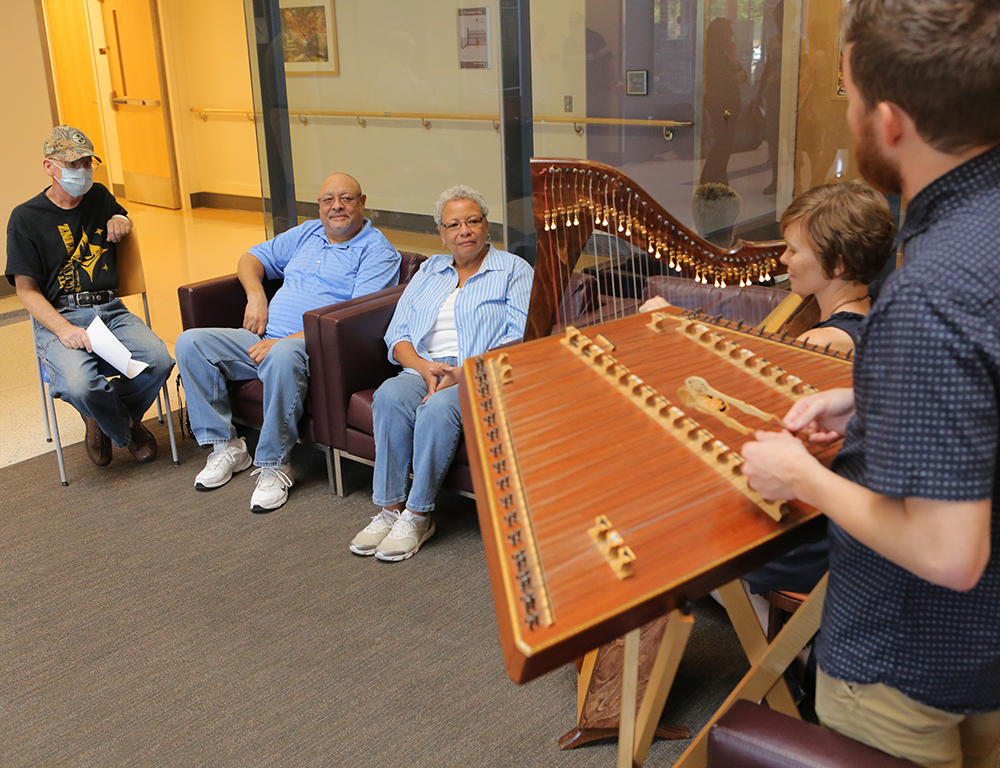The Medical Minute: Music can be good medicine

Music may not seem as potent as a pill, but in many cases, it's just what the doctor ordered.
Jan Stouffer has spent the last 25 years working as a board certified music therapist at Penn State Health Milton S. Hershey Medical Center. Working with Therapy Services, she uses music to help control patients' pain and anxiety, to ease their adjustment to the hospital setting, and to promote physical rehabilitation.
“Health is a dance back and forth between physical and emotional needs, so the two need to be addressed simultaneously for healing,” she said.
In the hospital setting, that means clinical, evidence-based use of music at bedside with patients to affect their healing and wellness. Rather than simply going room to room singing or playing music, music therapists work upon referral from a doctor or nurse and use a patient's treatment plan and priorities.
During an evaluation, Stouffer and her colleagues consider several factors. They include the patient's physiological state, their cultural background and music preferences, whether the music should be presented in a sedative or stimulative style, and whether it should be passively enjoyed or actively created.
Breathing and guided imagery techniques used with calming music can help patients struggling with pain and anxiety feel more comfortable.
“We can help focus their attention away from that,” Stouffer said. “It gives them an avenue for self-expression to share what they are thinking or feeling and work on developing coping strategies.”
For instance, a teen fighting cancer may connect with the lyrics of Rachel Platten's “Fight Song,” while someone else may use the sounds of an instrument to release feelings such as anger or frustration. Playing a wind instrument such as a recorder, kazoo, harmonica or slide whistle can help those who need lung exercises.
But the music goes beyond the bedside.
For the past five years, the Center Stage Arts in Health program has created an environment of music all over campus. It hires regional musicians to play in common areas such as lobbies and waiting rooms.
Claire de Boer, director of Center Stage, said the goal is to humanize the environment and soften edges of moments that could otherwise be more stressful. “It brings joy and creates community because patients and caregivers can share the experience of sitting and listening to live music together,” she said. “It's a type of engagement that doesn't have to do with diagnosis or treatment.”
The program matches the music to the environment, whether it's welcoming patients in a lobby or calming them between procedures.
de Boer said the impact of the program has been significant. “We count how many people stop and listen or smile when they walk by and it can be upwards of 300 people per performance,” she said. Multiply that by the 20 or so performances that take place across campus each month, and it reaches thousands.
Upcoming workshop:
- Center Stage will host a Music in Rhythm workshop series from 4:30 to 6 p.m. Dec. 15 and 4 to 5:30 p.m. on Dec. 22 for cancer outpatients and their caregivers. Jazz and meditative acoustic guitarist Jay Umble will teach patients of all musical abilities how to make percussive music together using a number of traditional and non-traditional instruments. Registration is free and includes snacks. Register by calling 717-531-6421 or emailing CenterStage@pennstatehealth.psu.edu.
Learn more:
- Watch Ask Us Anything About…Music in Medicine, a discussion featuring Jan Stouffer and Claire de Boer.
The Medical Minute is a weekly health news feature produced by Penn State Health Milton S. Hershey Medical Center. Articles feature the expertise of faculty physicians and staff, and are designed to offer timely, relevant health information of interest to a broad audience.
If you're having trouble accessing this content, or would like it in another format, please email Penn State Health Marketing & Communications.
